Mangoes—Reasons and Recipes to Eat the “King of Fruits”
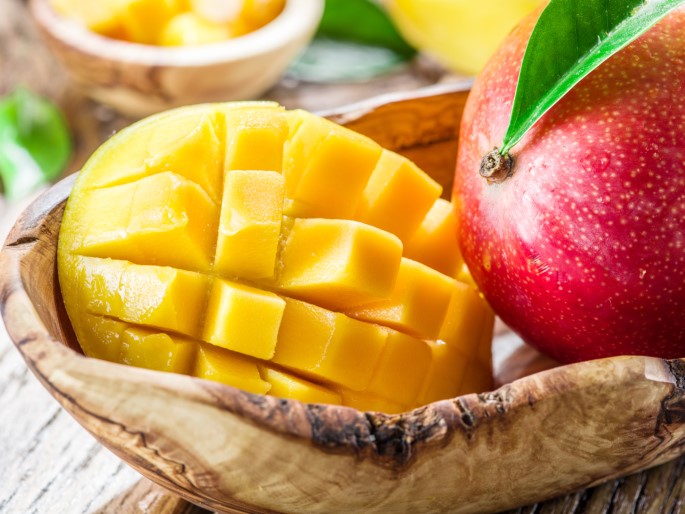
Mangoes taste so good that people forget they are also good for you! Take a look at information I found on a favorite site, Care2, on how the “king of fruits” can boost your health and then enjoy a couple mango recipes.
1. Mangoes prevent cancer: Research shows antioxidant compounds in mangoes protect against colon, breast, leukemia and prostate cancers. Besides an abundance of antioxidants, these compounds include quercetin, isoquercitrin, astragalin, fisetin, gallic acid and methylgallat.
2. Mangoes lower cholesterol: Their high levels of fiber, pectin, and vitamin C help to lower serum cholesterol levels, specifically Low-Density Lipoprotein (the bad stuff).
3. Mangoes clear the skin: They can be used both internally and externally for the skin. Mangoes help clear clogged pores and eliminate pimples.
4. Mangoes improve eye health: It just takes 1 cup of sliced mangoes supplies 25 percent of the needed daily value of vitamin A, which promotes good eyesight, prevents night blindness, and protects against dry eyes.
5. Mangoes alkalize the entire body: The concentration of tartaric acid, malic acid, and a trace of citric acid found in the fruit help to maintain the alkali reserve of the body.
6. Mangoes help with diabetes: Mango fruit has a relatively low glycemic index (41-60) so moderate quantities will not spike your sugar levels. And then there are benefits found in the mango leaves: They help normalize insulin levels in the blood. The traditional home remedy involves boiling leaves in water, soaking through the night and then consuming the filtered decoction in the morning.
7. Mangoes improve digestion: Papayas are not the only fruit that contain enzymes for breaking down protein. Mangoes also contain these enzymes, plus their fiber helps digestion and elimination.
8. Mangoes help protect against heat stroke: Juicing the fruit from a green mango and mixing it with water and a sweetener helps to cool down the body and prevent harm from overheating. From an ayurvedic viewpoint, the reason people often get diuretic and exhausted when visiting equatorial climates is because the strong “sun energy” is burning up your body, particularly the muscles. The kidneys then become overloaded with the toxins from this process.
9. Mangoes boost the immune system: The generous amounts of vitamin C and vitamin A in mangoes, plus 25 different kinds of carotenoids keep your immune system healthy and strong.
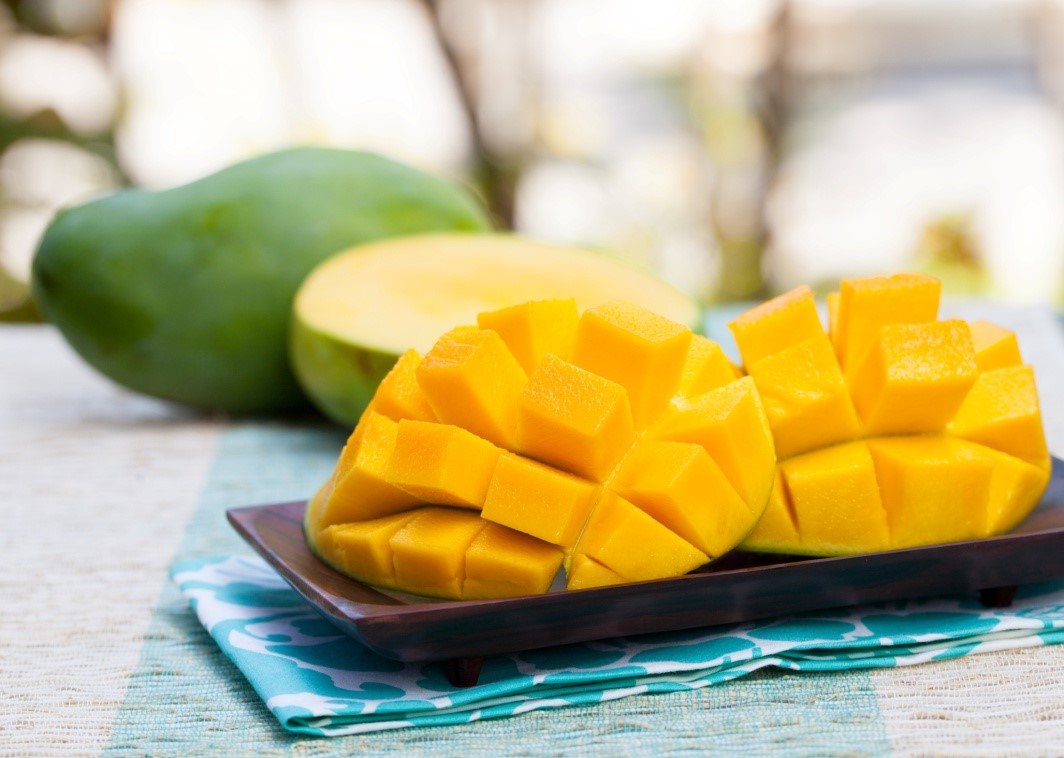
In spite of all the above-mentioned benefits, I have to say that mango hasn’t been my first fruit of choice, just because I’ve found it hard to prepare. I can peel it easily enough, but it’s getting the fruit off that large oval-ish seed that drives me nuts. How about you? So, with that in mind, here is the way professional chefs get the fruit ready to eat:
1.
Hold the mango on its side and cut down on both sides of the central seed. You will end with two big “halves” plus the central seed (that will still have
fruit clinging to it).
2.
Place each half on the cutting board with peel facing down and flesh facing up; cut the exposed flesh in a horizontal and vertical pattern, taking care not
to cut too deep through the skin.
3.
Then invert the whole half to push out the cubes as shown in the photo above.
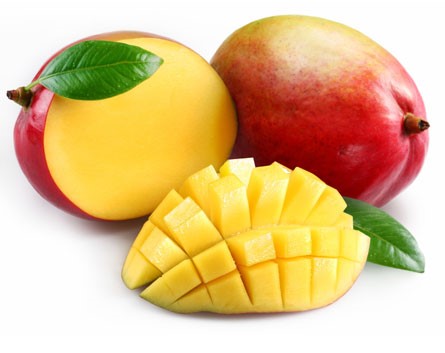
Now take a look at these two easy and delicious recipes. Although mango is delicious in and of itself, it also blends well into recipes. I love pureeing it and folding it into tapioca or vanilla pudding, or pouring the puree over vanilla ice cream. I’m also including it (now that I know how to cut it easily) into my morning smoothie. It’s fantastic with frozen blueberries! But however you choose to use it, do choose to use it. Mango has too much going for it not to be indulged in on a regular basis. It’s the “king of fruits” for good reason!
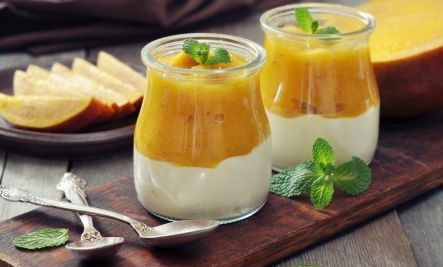
MANGO YOGURT BREAKFAST (serves 2)
8 ounces plain Greek yogurt, divided
1 large ripe mango, peeled and cut
2 -3 heaped teaspoons raw honey (less if the mango is really sweet)
1/4 teaspoon powdered cardamom
Blend the mango pulp until smooth. Place it in a bowl and let cool in the refrigerator for an hour or so. When mango is cooled, and you’re ready to serve, fold the honey into the yogurt and divide the yogurt between 2 serving dishes. Top the yogurt with the mango puree and sprinkle cardamom powder on top. Garnish with a few slices of fresh mango on top for extra texture and flavor.
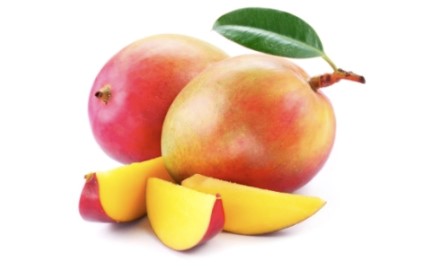
MANGO PIE
3/4 cup almonds, soaked 15 minutes
3/4 cup pecans
3–4 dates, pitted
1/2 cup raisins, soaked 1 minute
FILLING
2 cups mango (2–3 mangoes), divided
1 1/2 bananas
2 bananas, sliced
fruit of choice, sliced (peaches, nectarines, plums are good choices)
1/2 cup raisins
Crust: In a food processor, using the “S” shaped blade, blend the nuts, dates, and raisins. Remove filling and press evenly into a pie plate and chill.
For Pie Filling: In food processor, blend one cup of mango and 1 1/2 bananas.
Slice two bananas into 1/4” rounds and layer on the bottom of the pie crust. Slice remaining mango and place over bananas with sliced fruit of choice then
sprinkle in the raisins. Spread in some of the mango-banana sauce and mix it with the fruit. Pour remaining sauce on top. Decorate and chill for several
hours. (Place in the freezer 1/2 hour before serving.) Serve with sweetened whipped cream or vanilla ice cream.
- www.care2.com
- www.freshtexproduce.com
 Alice Osborne
Alice Osborne
Weekly Newsletter Contributor since 2006
Email the author! alice@dvo.com
